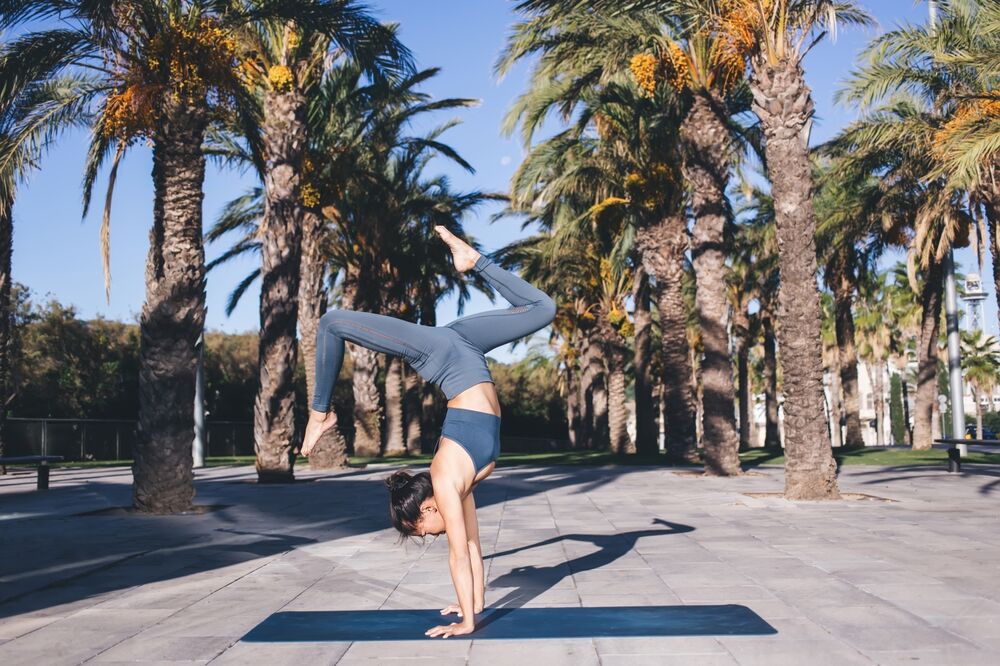
What is Yoga?
The term “yoga” is derived from the Sanskrit word “Yuj,” which means to yoke or unite. In the context of yoga, it refers to the union of the mind, body, and spirit through intentional and rhythmic movements. Those who practice yoga, known as yogis, seek to harmonize the body, mind, soul, and universal consciousness. Traditional yoga combines the recitation of mantras (mantrayana), deep breathing exercises (pranayama), and yoga postures to achieve these holistic benefits.
The origins of yoga date back more than 5000 years and are mentioned in several revered manuscripts, including the Rigveda and Upanishads. One of the most famous texts outlining yoga is the yoga sutras of Patanjali, written around 200 BCE. In this book, yoga was defined as the cessation of the whirling fluctuations of the mind—a benefit that enticed Eastern and Western thinkers alike. However, this is not the only benefit yoga provides.
How Does Yoga Heal?
Researchers studying the benefits of yoga have discovered numerous mental and physical healing effects associated with regular practice. The benefits stem from the influence of rhythmic breathing on heart rate and breathing patterns and its impact on cognition and neuroplasticity, combined with the effects of regular physical activity.
Some of the most popular effects include:
Physical Effects:
- Enhanced muscular strength
- Improved body flexibility
- Lowered breathing rate
- Improved cardiovascular health
- Improved respiratory function
- Reduced muscular pain
- Reduced inflammation
- Improved blood flow to the digestive system
- Reduced heart rate
Mental Effects:
- Improved concentration
- Enhanced addiction recovery
- Reduced anxiety and stress
- Decreased depression symptoms
- Improved sleep quality and duration
- Improved sense of relaxation
- Improved quality of life
- Renewed sense of calm
- Enhanced cognitive skills
Yoga and PTSD Symptoms
Post-traumatic stress disorder is a behavioral disorder that develops from experiencing a traumatic event. People with post-traumatic stress disorder experience anxiety, hostile and intrusive thoughts, flashbacks, and even nightmares related to this event long after it’s over. The symptoms of PTSD can be so disruptive that individuals with it cannot attend work or school and require medication to function.
Groundbreaking studies have revealed a link between the practice of yoga and the reduction of post-traumatic stress disorder (PTSD) and complex post-traumatic stress disorder (C-PTSD) symptoms.
According to Harvard Health, yoga can reduce intrusive memories and emotional arousal and produce steadier breathing. The National Library of Medicine found that yoga breathing reduces the severity of PTSD symptoms by 60% within five weeks while decreasing depressive symptoms in just seven days. This study also found yoga breathing to have a therapeutic effect on women who were victims of abuse or domestic violence.

Different Yoga Styles
There are various styles of yoga, each with its own method of practice and health benefits. If you want to improve your mental health and well-being, consider trying one of these four popular yoga styles.
- Kundalini Yoga: This style of yoga combines meditation, chanting, movement, and deep breathing to connect to a spiritual center. The purpose of Kundalini is to gain a greater awareness of self.
- Vinyasa Yoga: Vinyasa yoga, recently popularized by Nike, focuses on “flowing” from one yoga sequence to another. Practitioners use sun salutations and synchronized breathing to heal.
- Yin Yoga: Yoga practitioners hold their postures while focusing on slow rhythmic breathing. You can expect to overcome the limitations of your mind while practicing this Tao-inspired yoga style.
- Trauma-Conscious Yoga: Trauma-conscious yoga (sometimes called Trauma-informed yoga) is a practice that combines somatic psychotherapy and yoga to heal individuals suffering from trauma. This style of yoga incorporates self-regulation strategies, a build-up of progressions (allowing the student to feel comfortable and safe before progressing), posture alternatives to avoid PTSD triggers, and inviting language.
Trauma-Conscious Yoga for Veterans and First Responders
Veterans and first responders are at higher risk of developing post-traumatic stress disorder due to repeated exposure to trauma. Since each person’s experience of trauma is different, their PTSD triggers will also vary.
Trauma-conscious yoga instructors are attuned to these subtleties and have developed yoga practices to accommodate them. In trauma-conscious yoga, the practitioner’s comfort takes precedence, allowing them to reap the same benefits as individuals without PTSD.
For example, a trigger for someone might be feeling. Instead of the traditional yoga circles where everyone faces each other, individuals might face a wall or a calming painting to address this trigger. To avoid eye contact, they may be encouraged to look downward. Furthermore, personal space is always respected, as some practitioners may feel uncomfortable being touched. These adaptations create a safe environment, enabling practitioners to benefit from their sessions.
Practicing Yoga with PTSD
If you or someone you know has post-traumatic stress disorder, addiction, or another mental health disorder, yoga can be a great addition to an evidence-based treatment plan. However, before enrolling in any form of yoga, seek the guidance of a medical professional or therapist to weigh the pros and cons.
For more information about trauma-conscious yoga and how it improves the lives of veterans and first responders, contact Connected Warriors.
And as always, you don’t have to suffer in silence.
Reach out to Transformations Treatment Centers for more information on PTSD and the holistic treatment options we provide.




